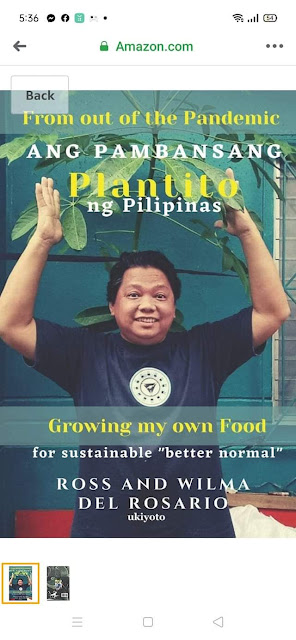Wazzup Pilipinas!?
Dhaka, Bangladesh – A chilling truth has emerged from beneath the glossy surface of the beauty industry. A new study has exposed a deadly secret concealed in the jars of popular skin-lightening creams sold in Bangladesh—a secret that is slowly poisoning consumers in pursuit of lighter skin. The study, spearheaded by the Environment and Social Development Organization (ESDO) in collaboration with the European Environmental Bureau (EEB) and supported by BAN Toxics, has ignited a public health firestorm: 22 out of 26 tested products were found to contain dangerously high levels of mercury, a potent neurotoxin banned in cosmetics by international standards.
Despite the global outcry and regulatory bans, these mercury-laden creams remain easily accessible both in physical shops and online, exposing millions to severe and silent health threats.
A Crisis Unveiled: Mercury Levels Thousands of Times Over Legal Limits
Using state-of-the-art X-ray Fluorescence (XRF) analyzers, researchers uncovered mercury concentrations that are not just above—but astoundingly beyond—the 1 part per million (ppm) safety limit prescribed under global regulations.
Among the most toxic offenders:
Due Beauty Cream – 24,800 ppm
Golden Pearl Beauty Cream – 20,700 ppm
FEIQUE Whitening Cream – 15,500 ppm
Parley Beauty Cream – 10,000 ppm
Kim Whitening Cream – 7,400 ppm
The numbers are not just alarming—they are apocalyptic. Even more horrifying is the fact that some of these products have been officially banned by the Bangladesh Standards and Testing Institution (BSTI), yet are still readily available on market shelves and e-commerce platforms.
2024 Tests Show No Sign of Improvement—Only Escalation
Recent testing in 2024 revealed a continuation of the threat:
Jiaoli Whitening Night Cream – 5,140 ppm
Collagen Plus Vitamin E Night Cream – 4,120 ppm
Natural Pearl Whitening Anti-Aging Cream – 2,780 ppm
Feique Papaya Whitening Package – 1,840 ppm
Only a handful of creams, such as Thanaka and Collagen Plus Day Cream, showed no detectable mercury, making them rare exceptions in a dangerously polluted market.
Experts Raise the Alarm: “Mercury is a Silent Killer”
"Despite some progress in local and global regulations, the continued availability of these toxic products is appalling," said Prof. Dr. Md. Abul Hashem, former chairman of Jahangirnagar University's Department of Chemistry and Senior Technical Adviser of ESDO. “We are risking irreversible damage to public health and the environment.”
Dr. Shahriar Hossain, Senior Technical Adviser of ESDO, added, "Mercury doesn’t kill instantly—it destroys silently. It accumulates in the body and targets the nervous system, causing long-term and often undetected damage."
The World Health Organization (WHO) echoes these concerns, warning that mercury exposure can damage the kidneys, lungs, eyes, digestive tract, and immune system. Particularly vulnerable are infants, children, and unborn fetuses, who can suffer permanent developmental damage through direct or indirect exposure.
Regulators Struggle Against a Global Problem
While BSTI claims to be conducting market raids and undercover operations, Deputy Director Abu Sayed admits the agency is fighting a losing battle: “BSTI alone cannot eliminate this threat. We need the public, the media, civil society, and international allies to act.”
Thony Dizon, Advocacy Officer for BAN Toxics, stressed that the mercury crisis is not limited to Bangladesh. "We face the same danger in the Philippines. Even though more than 100 mercury-laced products are banned, they still flood our online marketplaces. This is a transboundary crisis that demands international cooperation."
According to Dizon, 18 of the mercury-positive creams were traced back to origins including Pakistan, China, Korea, Thailand, Taiwan, Vietnam, and Bangladesh itself—further proving the global scale of the issue.
A Broken Beauty Standard and a Toxic Legacy
This is more than a health crisis. It is a reflection of a societal sickness—the toxic ideal that lighter skin equates to beauty, success, or worth. Multinational marketing campaigns, cultural pressures, and social media influencers have only intensified the demand for products promising a fairer complexion—regardless of the health cost.
“It’s time to dismantle these harmful beauty standards,” said Siddika Sultana, Executive Director of ESDO. “We envision a toxics-free Asia where consumers are not victims of the products they trust. That vision will only become reality through stricter laws, consumer education, and unyielding vigilance.”
Toward a Mercury-Free Future
Since 2017, ESDO and BAN Toxics have stood at the forefront of the battle against mercury in cosmetics. As partners in the Zero Mercury Working Group (ZMWG), their mission is clear: to eliminate toxic skin-lightening products and safeguard public health.
Yet the fight is far from over.
To truly end this crisis, governments must implement stronger border controls, tighten regulatory loopholes, and enforce international agreements such as the Minamata Convention on Mercury, which prohibits the manufacture, import, and export of mercury-added products.
The path forward demands not just science, but solidarity. It requires citizens to demand safe cosmetics, companies to prioritize public health over profit, and governments to crack down on illegal trade and unsafe manufacturing.
Until then, the deadly glow of mercury will continue to haunt the cosmetics aisle—and the unsuspecting millions who simply want to feel beautiful.
For more information on mercury in consumer products and how to stay safe, visit the official websites of ESDO, BAN Toxics, and the Zero Mercury Working Group.

.png)



















 Ross is known as the Pambansang Blogger ng Pilipinas - An Information and Communication Technology (ICT) Professional by profession and a Social Media Evangelist by heart.
Ross is known as the Pambansang Blogger ng Pilipinas - An Information and Communication Technology (ICT) Professional by profession and a Social Media Evangelist by heart.






.jpg)





Post a Comment